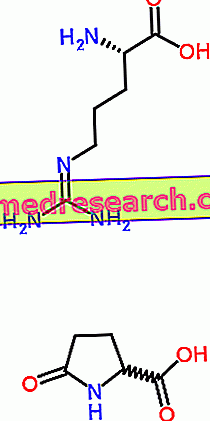Generality
Cauterization is a medical practice which consists in the therapeutic destruction of some tissues through the use of heat or caustic substances .

In more practical terms, the procedure involves a circumscribed burn, which induces necrosis (ie cell death) of the treated part.
The cauterization is used for ambulatory or surgical operations, mainly for the purpose of:
- Produce a haemostatic effect (ie stop small blood spills and heal blood vessels);
- Remove or dissect parts of tissue or small organs (such as appendages or various types of skin growths);
- Mitigate damage due to unwanted growth (eg small tumors, pinguecula in the eye etc.) or minimize other potential complications, such as infections, when antibiotics are not available.
The possible applications of cauterization are different. In dermatology, for example, this technique is indicated to eliminate some skin growths (such as warts) and remove small superficial tumors. Cauterization is also used to stop blood spills (epistaxis, intraoperative bleeding, etc.) and, in the gynecological field, can support the treatment of cervical lesions and some sexually transmitted diseases.
What's this
What is Cauterization?
Cauterization is an operation that makes use of particular red-hot instruments (such as cautery or other heat sources), caustic substances or chemicals (such as silver nitrate) to carry out a limited burning of the tissues .
Did you know that…
In the past, cauterization was widespread for wound treatment.
Before the advent of antibiotics, this practice was considered useful above all to avoid bleeding and complete amputation procedures.
In modern times, however, it has been shown that cauterization can increase the risk of infection, causing more tissue damage and providing a favorable environment for bacteria to proliferate.
Cautery: characteristics of the instrument
The cautery is a surgical instrument equipped with pointed, ball or loop ends, which allows a limited application of high temperatures on the part to be treated. There are different types of this device (red-hot iron, thermo-cautery of Paquelin, electro-cautery in the shape of a knife, etc.).
In any case, contact with the terminal part of the cautery produces immediate tissue death (necrosis).
Chemical cauterization
The indications of chemical cauterization are rather limited, since the caustic substances used for this practice can "filter" in areas not intended for treatment. For this reason, alternative methods (laser or electro-cautery) are preferable.
Chemical cauterization is most commonly used in the dermatological treatment of warts and in the removal of small skin lesions .
Cauterising agents include silver nitrate, trichloroacetic acid and cantharidin.
Basic principle of Cauterization
In cauterization it is possible to distinguish two types of actions, one local and one widespread.
- Local action : it is strictly limited to the surface touched by the red-hot end of the instrument. The local effect of cauterization consists essentially in a third-degree burn with carbonization of the tissues and formation of a dry eschar, with a black complexion. The latter detaches itself after 8-12 days, leaving a continuous solution, covered with good-looking granulations. The sore left over from cauterization turns quickly to scarring .
- Diffuse action : it is due to the heat radiating from the cauterized part. The diffuse action is extended to a more or less vast area, depending on the shape, size, quality and degree of incandescence of the end of the cautery. In this case, degenerative lesions of varying degrees occur, associated with a thrombosis of the vessels of the area treated with cauterization. This thrombotic phenomenon is due to:
- To the direct coagulant action of heat on the blood;
- To the action of heat on the vascular intimate, which is altered, with consequent thrombosis of the vessel; the surgeons use this effect in particular circumstances to obtain hemostasis.
What is it for?
The cauterization is mainly used in the surgical, dermatological and gynecological fields.
Cauterization in surgery
Cauterization can be used to stop small blood spills and heal blood vessels, which can be incised during surgery.
As anticipated, the heat used to cauterize the tissues produces, in fact, the coagulation of the proteins of the organic tissues surrounding the wound, with a hemostatic effect .

The use of this technique is possible in the diaeresis, that is when it is necessary to achieve the separation, in the same way as a scalpel, of some tissues (such as ligaments) or small organs to be removed (eg appendix). In this case, the incision made with cauterization has the great advantage of being hemostatic.
The cauterization is useful in the incision of very vascularized organs, where it is applied as a means of preventive haemostasis (liver, spleen, vascular peduncles, etc.).
The cautery is also used in the laparoscopy for abdominal operations and in the lysis of small adhesions between the intestinal loops. Other possible indications are the surgical treatment of hemorrhoids, anal fistulas and infected tissues (honeycomb, necrotizing phlegmons, etc.).
Cauterization in dermatology
In dermatology, cauterization is mainly used for the treatment and / or removal of small superficial tumors, imperfections or various types of skin growths, such as:
- warts;
- warts;
- Pendulous fibromas;
- Some types of snow;
- Starry Angiomas;
- Seborrheic or actinic keratosis;
- Ecstatic venous capillaries.
Cauterization in gynecology
In gynecology, cauterization is used for the removal of condylomata acuminata, also known as "venereal warts", since they represent a highly contagious sexually transmitted disease.
Cauterization can also be used to eliminate a benign cervical polyp or to treat small sores in the cervix (diathermocoagulation or DTC). In gynecological surgery, this treatment can be used for tubal sterilization .
Other possible applications
- Epistaxis : the cauterization allows a rapid arrest of the hemorrhage, for this it is recommended for repeated cases of bleeding from the nose;
- Corneal disorders .
In some countries, cauterization is also used to practice amputation (to prevent death from severe blood loss) and infant circumcision (a much-discussed method, as it can severely damage male genitals).
Preparation
- The cauterization procedure can cause burning and / or pain ; for this reason, it is usually done under local or general anesthesia .
- Depending on the type of disorder to be treated, it is possible that the doctor prescribes an antibiotic for the prevention of any infectious complications .
How to do it
The cauterization is carried out, generally, by using the cautery which incises and, immediately afterwards, heals the tissues.
The heat produced by the instrument is concentrated on a small end, which is put in contact with the part to be treated to cause more or less deep burns.
Did you know that…
The electrosurgical unit used in surgery associates the principle of cauterization with the cutting action of the blade on the edges of the incised tissue. This tool offers the advantage of limiting tissue aggression and bleeding.
After Cauterization
- During the healing period, if exposed to the skin, the part treated with cauterization will be covered with dark-colored scabs. These will have to fall spontaneously (generally, this occurs within a week or two) and their detachment must not be forced in any way.
- After cauterization, the doctor can prescribe appropriate drugs or medications to be applied on the areas affected by the intervention in order to ensure proper healing and avert the appearance of any complications.
- To promote healing, it is also good to avoid intense physical activity and try not to rub or otherwise "traumatize" the areas that have been treated with cauterization.
Complications and Risks
The side effects of cauterization are usually mild and tend to resolve spontaneously in a short time. Among these, we mention the possible onset of pain or, if the treatment involves the skin surface, redness and burning.
Among the possible complications that may occur following the cauterization procedure, instead, the appearance of keloid scars should be mentioned. In the treatment of epistaxis, it is possible to reopen the blood vessel and, rarely, the perforation of the nasal septum (very rare occurrence).
Cauterization, like any other medical procedure, has some contraindications that can cause the doctor to opt for other treatment options.
More precisely, this type of treatment should be carried out with extreme caution in the event of:
- Very important and protracted bleeding;
- Elderly subjects;
- Therapy with anticoagulants or antiplatelet agents;
- Coagulation disorders;
- Severe cardiac disorders.



